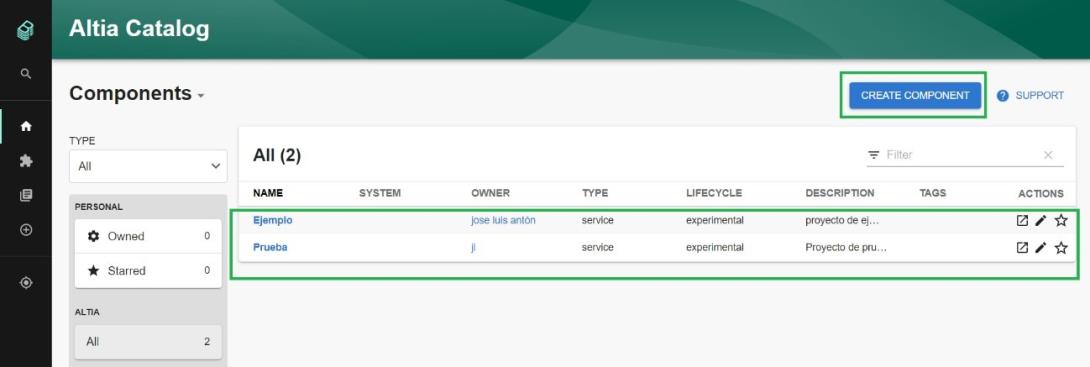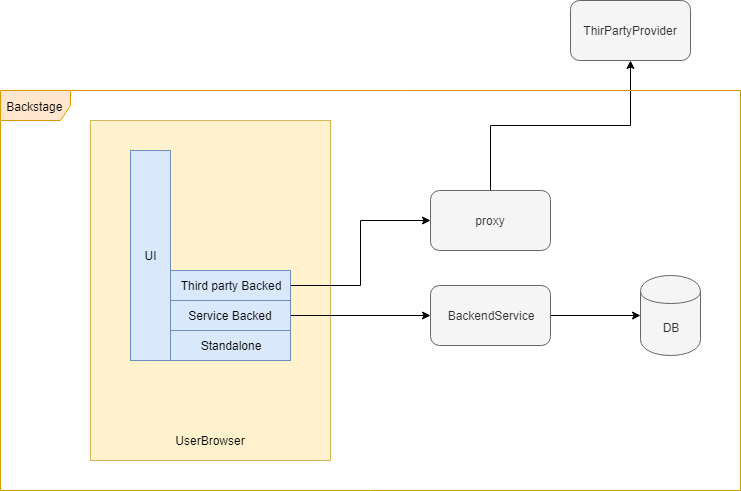
The idea arose from the need to Microservices organization: “ Where is that API for that service we're all supposedly using? ”, “ This service isn't responding, who owns it? ”…
How does the software catalog work?
Backstage is a centralized system that keeps track of a project's ownership and metadata within the ecosystem (services, websites, libraries, etc.). It's built around the concept of YAML metadata files, which are stored alongside the code.
To create a component in the catalog, simply enter it and click Create Component. From there, various templates will appear that will allow you to generate a skeleton of the desired software type: microservices, complete projects, libraries, etc. All you have to do is fill out a short form with names such as description, package, name, and so on, and the component will appear in the catalog along with the relevant metadata.

Figure 1: How to create a component
What are templates?
A template is a YAML document containing metadata related to the software project to be created, including a description of the component creation flow, as well as a skeleton used to generate the software project already initialized and ready to start adding logic. These can be created from scratch and are maintainable via Git.
How is Backstage built?
Backstage is made up of three fundamental parts:
Core: Base functionality of the system.
App: An application instance that is deployed and customized to meet your needs. It combines core functionality with additional plugins.
Plugins: These are additional functionalities that adapt the application's behavior to what the company needs.
Plugins can be of three types:
Standalone: Those that run entirely on the server.
Backed services: These are services that require a backend service to function. The most important in this regard would be the Service Catalog, since it controls the component catalog.
Third party backed: These are those that require an external provider to operate.
Backstage is easily Dockerizable and provides very precise information on how to perform the process, allowing you to adapt the source code to what you need and build your own image of the product.

Figure 2: Backstage Architecture
Authentication
Backstage supports authentication with various providers such as Atlassian, Auth0, Azure, Bitbucket, GitHub, GitLab, Google, Okta, OneLogin or OAuth2Proxy.
This is activated by deployment and other custom Providers can be added
Want to know more about Hunters?
At Altia, we've designed several programs to help people finishing their degree or recent graduates get started in the IT sector, leveraging their talent and passion for technology. One of these programs is Hunters : people who are trendsetters, have an innovative spirit, and contribute to anticipating future challenges. Being part of Hunters means being part of a cross-functional group capable of generating and transferring knowledge.
Join the Hunters program and become part of a cross-functional group capable of generating and transferring knowledge.
 José Luis Antón Bueso - Solution Architect at Altia
José Luis Antón Bueso - Solution Architect at Altia



